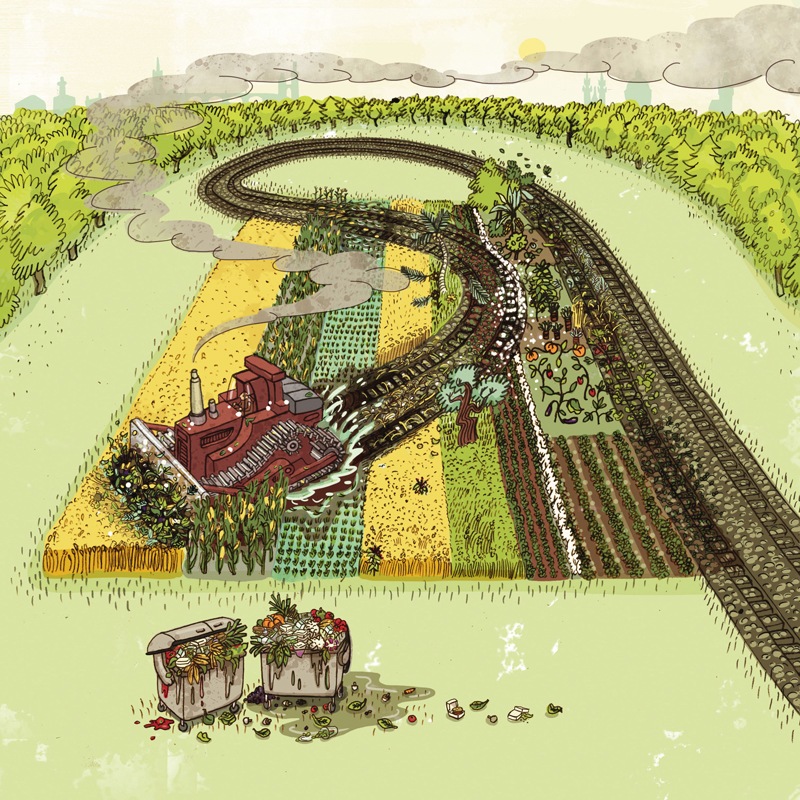假设我们一生中每天都消耗3500卡路里,我们有可能直接爆掉。一个很不锻炼的成年人每天需要大约2000卡路里。如果将包含这么多卡路里的食物放在一个盘子里,放于全球,那就需要收割4600卡路里的食物——比成年人每天所需要的两倍还多。
一方面,为了让超市里面的东西永远看起来新鲜和完美,并随时有货,很多食物都被扔了;另一方面因为我们买的食物往往会比我们能吃下的要多,因此造成了食物的浪费。不是所有浪费都能被避免,例如,蔬菜皮,然而,的确很多浪费都是可以避免的。在欧洲以及其他工业地区,食物大多是在加工、零售、烹饪和私人宴请的时候被浪费的。在热带地区和欠发达地区,未经田间到加工的生产链的食物浪费是最严重的:发霉的、变质的、被老鼠和虫啃的,甚至是还没有收割的。收获后的损失同样也出现在欧洲。由于胡萝卜、土豆以及其他蔬菜经常不符合零售业的要求,数以吨计的蔬菜被销毁或者直接留在田里。
链接
![]() Food wastage footprint – Analyzes the impact of food waste on climate, water, land use and biodiversity. Food and Agriculture Organisation (FAO) (2013).
Food wastage footprint – Analyzes the impact of food waste on climate, water, land use and biodiversity. Food and Agriculture Organisation (FAO) (2013).
![]() Reduce your foodwaste footprint
Reduce your foodwaste footprint
– Discover the main findings and tips of the new FAO report via this 3 minute video animation
![]() Love Food Hate Waste
Love Food Hate Waste
– Raises awareness and gives tips on reducing food waste, including recipes for using your food scraps
![]() Think.Eat.Save: Reduce your Foodprint
Think.Eat.Save: Reduce your Foodprint
– Ways to save food and money
![]() SAVE FOOD
SAVE FOOD
– Infographics and statistics on the 1.3 billion tonnes of food lost or wasted per year
![]() FAO Tool-Kit
FAO Tool-Kit
– Recommendations on how food waste can be reduced at every stage of the food chain
![]() Taste The Waste
Taste The Waste
– Documentary challenging why we throw away so much food and how we can stop it
![]() WASTE
WASTE
– An informative short film on the relationship between food waste and resource waste
讨论会
[bbp-single-tag id=30]


